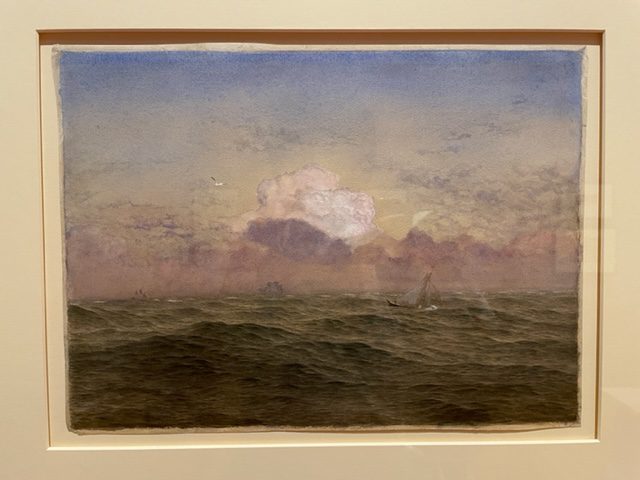By May S. Ruiz
Artworks that trace the practice of drawing in Britain from the 17th through the mid-20th century are featured in an exhibition called “100 Great British Drawings” at The Huntington Library, Art Museum, and Botanical Gardens. On display from June 18 through Sep. 5 in the MaryLou and George Boone Gallery are works of renowned British artists – William Blake, John Constable, Thomas Gainsborough, and J. M. W. Turner, as well as artists of the Pre-Raphaelite Brotherhood and early 20th-century modernism.
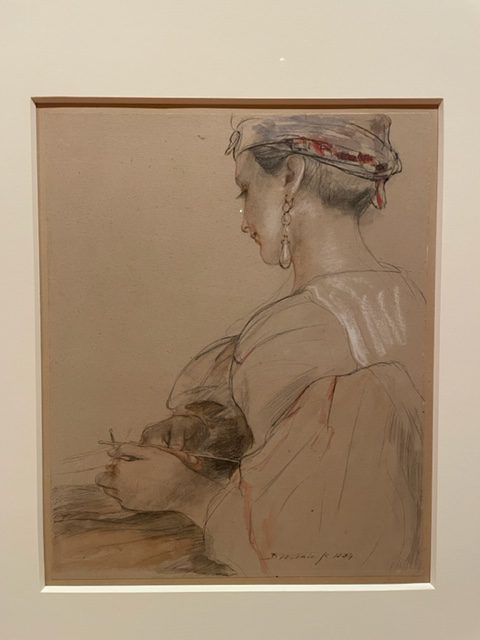
“The Huntington is renowned for its incomparable collection of British art, ranging from 15th century silver to the graphic art of Henry Moore, with the most famous works being, of course, our grand manner paintings,” Christina Nielsen, Hannah and Russel Kully Director of the Art Museum, states in a press release. “Thomas Gainsborough’s Blue Boy and Thomas Lawrence’s Pinkie often serve as the poster boy and poster girl for the whole institution. But what most visitors do not realize is that The Huntington is also home to an extensive and remarkable collection of British drawings. This exhibition and catalog, the first to show the range of our British works on paper on such a scale, seek to fill that knowledge gap.”
During the exhibition’s reception and viewing, Nielson remarks, “You’ll see 100 works – some of which have never before been seen – judiciously chosen by Melinda McCurdy, our curator of British Art. But did you know that we have 12,000 British works on paper – prints, drawings, watercolors? These are only the tip of the iceberg. This is really an important step for us as The Huntington makes a priority of giving access to its collection. It’s an extraordinary opportunity to view these treasures of work on paper that are very light sensitive and can only be actually shown in person on a rotating basis every few years for three months at a time. We’ll then continue to make them accessible to scholars and to the public digitally.”
“This has been a long time coming,” Melinda McCurdy states. “We had originally intended for it to open in 2020 as part of The Huntington’s Centennial Celebration. However, the pandemic intervened and we had to put it on hold. We chose 100 representative artworks to show the quality, and the depth and breadth of our collection of British drawings. The hardest part was settling on only 100 and it certainly took a long time to do that. Technically, there are 102 drawings on display – there are a hundred frames but there are 102 drawings.”
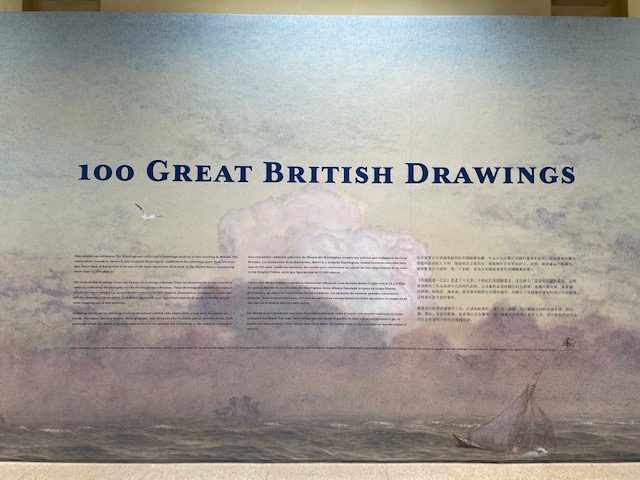
McCurdy discloses with a smile, “When the exhibition designer asked what I had in mind for it, I said ‘Just make it pretty.’ And so when it’s 120 degrees outside and you come in, it’s like stepping into a watercolor. That’s actually done on purpose; the color scheme and design of the entire exhibition is based on one watercolor in the exhibition.”
By email, McCurdy explains how she selected the artworks, “It took several months, but I looked at all of our British drawings and considered each of them for condition, historical importance, quality, finish, and how they reflected the character of the collection as a whole in terms of its makeup and strengths. It was fairly easy to narrow it down to the top several hundred, but from that point there were definitely some tough decisions to make. And the decision wasn’t made alone – there was a lot of discussion with colleagues inside and outside the institution. We tried as much as possible to create a balance between subject and medium.”
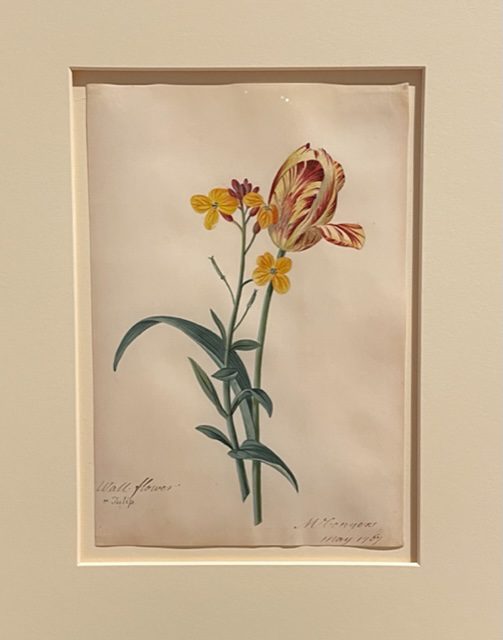
“While we don’t have immediate plans to do another exhibition exactly like this one, we will definitely use our British drawings collection in future projects, whether as elements of large thematic exhibitions or on their own in special installations,” McCurdy adds.
McCurdy reveals that the exhibition design and color scheme were derived from John Brett’s The Open Sea. “I had chosen this watercolor as the cover image for the book – its color scheme and composition made it perfect for that – and once that decision was made, it was a natural to continue with it in the larger exhibition design. It’s a fairly recent addition to the collection (2018), so hadn’t been on exhibition here before and was not as well-known as some of our other drawings.”
But while the choice of exhibition design came easily enough to McCurdy, her favorite artwork is less easy to pick. She confesses, “Every time I walk into the gallery I find a new favorite.”

Visitors to the museum would likewise find it difficult to name one artist or artwork that stands out. All the drawings, sketches, and watercolors offer something. McCurdy suggests, “I would recommend visitors spend time with the objects on display. Pick out one or two in each room of the exhibition and look closely for a few minutes. The great thing about drawings is that the more you look, the more details you notice, and the more you can understand how the images were made. Drawing is something most of us can relate to. Its marks on paper. Many of us drew pictures as kids, so there’s already a built-in connection there. Even if the drawing is 200 years old, we can easily imagine the artist swiping a brush dipped in watercolor across a sheet of paper or making a line with a pencil or pen.”
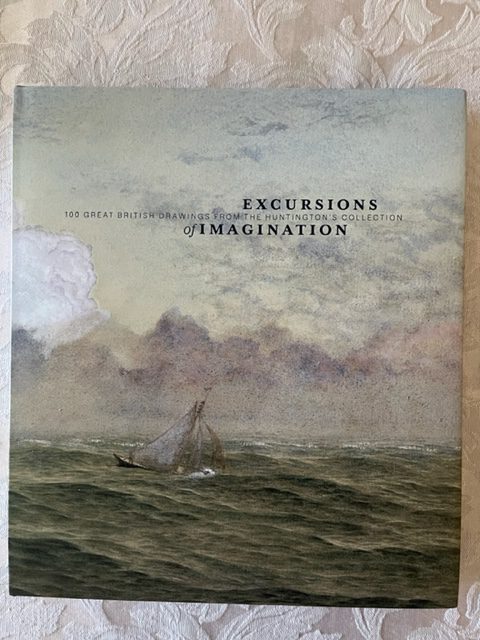
A companion catalog – Excursions of Imagination – beautifully preserves for posterity this first-ever public exhibition. In the foreword, Nielson divulges that except for a “few key examples, most notably by Blake, Henry and Arabella did not collect drawings. Instead, the superb collection presented here came together thanks to the vision and tenacity of the longtime curator of the art gallery, Dr. Robert R. Wark. He saw an opportunity to build on The Huntington’s strength in British art while forging a new path by acquiring works on paper. Scooping up the Gilbert Davis Collection in 1959, he spent the next three decades purchasing drawings that deeply resonated with other Huntington collecting areas, including botanical illustrations and drawings by children’s book illustrators. … Wark also made a point to buy drawings by women artists.”
In the catalog introduction, McCurdy recognizes Wark’s significant contributions to The Huntington’s vast holdings of British Arts and expounds, “Henry was an avid collector of books, whereas his wife, Arabella, was the driving force behind their important collection of paintings and decorative art. Drawings did not factor largely into their art purchases. In 1910, however, Henry acquired roughly 240 drawings by the late eighteenth-century British satirical artist Thomas Rowlandson from the Philadelphia book dealer Charles Sessler. In the mid-1920s, he purchased two further sets of Rowlandson drawings, also from Sessler: A Tour in a Post Chaise, numbering 69 items and The English Dance of Death, about 100 works. These acquisitions comprise the bulk of The Huntington’s drawings by Rowlandson…. Wark accounts for these important but anomalous acquisitions by the fact that Henry purchased the Rowlandson drawings as part of bound volumes. In other words, he bought them because they were books. Still today, The English Dance of Death series resides within the library rather than the art collections.”
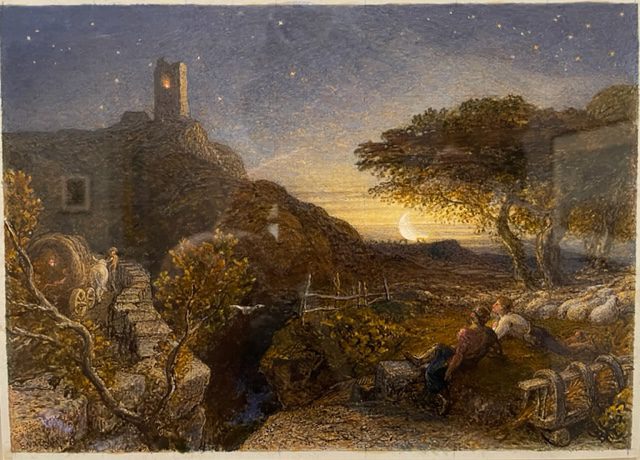
McCurdy offers a comprehensive account of how the ‘Huntington collection’ grew to be the extraordinarily expansive and expertly curated assemblage that it is today. Ann Bermingham’s essay educates readers that “drawing is a journey – an excursion of imagination” then splendidly navigates us through it and, along the way, through the history of British drawing as an art form. The Illustration descriptions by McCurdy and Jessie Fontana-Maisel depict extraordinary detail and proffer fascinating perspective.
With its eye-pleasing jacket, enlightening information, meticulously formatted pages, and carefully researched entries, Excursions of Imagination is indeed a work of art itself, as McCurdy pronounces. It is an indispensable companion to the 100 Great British Drawings exhibition – a well-articulated representation of the institution’s massive holdings. And long after the show closes, it will remain a fount of knowledge about the incredible collection of British art at The Huntington.

